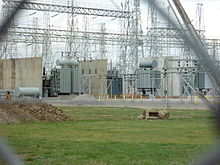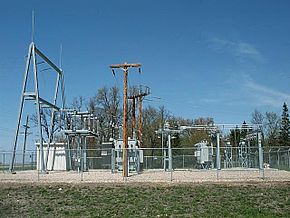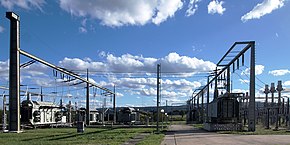Types of Substations
– Transmission substations
– Distribution substations
– Collector substations
– Converter substations
– Switching stations
Design Considerations
– Circuit breakers for short circuit and overload protection
– Recloser circuit breakers or fuses for distribution circuit protection
– Transformers for voltage conversion
– Capacitors, voltage regulators, and reactors for additional functions
– Different substation locations: surface, underground, indoor
Safety Measures
– Grounding system design to protect against touch and step potentials
– Proper grounding of metallic fences to prevent hazards
– Balance between reliability and cost in substation design
– Expansion capability of the substation
– Environmental considerations such as drainage and noise
Location Selection Factors
– Sufficient land area for equipment installation and access
– Use of gas insulated switchgear to save costs in urban areas
– Elevated structures for substations in coastal areas prone to flooding
– Room for expansion due to load growth or transmission additions
– Consideration of environmental effects, drainage, noise, and road traffic
Design Diagrams and Components
– Preparation of one-line diagram for simplified representation of switching and protection arrangement
– Disconnect switches and circuit breakers for incoming lines
– Current transformers to detect fault currents and trip circuit breakers
– Buses for connecting lines of a given voltage
– Line entrance surge arrestors for protection against lightning and switching surges Source: https://en.wikipedia.org/wiki/Electrical_substation
A substation is a part of an electrical generation, transmission, and distribution system. Substations transform voltage from high to low, or the reverse, or perform any of several other important functions. Between the generating station and consumer, electric power may flow through several substations at different voltage levels. A substation may include transformers to change voltage levels between high transmission voltages and lower distribution voltages, or at the interconnection of two different transmission voltages. They are a common component of the infrastructure. There are 55,000 substations in the United States.

- Primary power lines' side
- Secondary power lines' side
- Primary power lines
- Ground wire
- Overhead lines
- Transformer for measurement of electric voltage
- Disconnect switch
- Circuit breaker
- Current transformer
- Lightning arrester
- Main transformer
- Control building
- Security fence
- Secondary power lines


Substations may be owned and operated by an electrical utility, or may be owned by a large industrial or commercial customer. Generally substations are unattended, relying on SCADA for remote supervision and control.
The word substation comes from the days before the distribution system became a grid. As central generation stations became larger, smaller generating plants were converted to distribution stations, receiving their energy supply from a larger plant instead of using their own generators. The first substations were connected to only one power station, where the generators were housed, and were subsidiaries of that power station.

